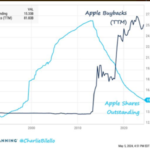One of the factors that successful equity investors tend to possess is courage. Being courageous and jump into the market when there is blood all over the market is not easy. For most investors it is much easier to buy in a rising market than a plunging one. The human fear of unknowns and complete wipe-out prevents investors from buying stocks when the market collapses. For instance, during the trough of the Global Financial Crisis(GFC) was a great time to invest in stocks. But most people, including yours truly, did not. This is because at that moment it felt like stock indices were heading to zero and that depression is inevitable. So to protect remaining assets investors failed to pump in new money into the market. Some investors freaked out and even sold at bargain prices losing a lot of money in the process.
However bold investors that bought as much stocks as possible with both hands more than doubled their investment in the following years as the US market roared back to pre-crisis levels like a charging lion. Though phrases like “Buy Low Sell High” sounds simple, in reality it is much more difficult to know when stocks are cheap. When stocks keep falling with no end in sight, it can cheaper everyday until theatrically reaching a price of $0.01 or one cent. In such scenarios investors who have conviction on the market or a particular company should buy at lower lows and hold them for years to gain tremendously when the stock soars.
This weekend’s Jason Zweig article in the journal explained the importance of courage in equity investing using the great economist and investor John Maynard Keynes as an example. From the article:
In a new research paper in Business History Review, an academic journal, finance professor David Chambers of Cambridge’s Judge Business School and economist Ali Kabiri of the University of Buckingham analyze how Keynes mustered the courage to invest heavily in U.S. stocks devastated by the crash and the ensuing depression.
Keynes had almost entirely ignored U.S. stocks in the college’s endowment until September 1930. What a time to get interested! The U.S. stock market had fallen 38.4% over the preceding 12 months. But Keynes was so excited by the bargains he saw opening up in the U.S. that he worked with a small New York brokerage, Case Pomeroy & Co., to research the market and his own stock ideas. In 1931, when U.S. stocks fell a bloodcurdling 47.1%, and again in 1934, when they dropped another 5.9%, Keynes traveled to the U.S., spending much of his time meeting people on Wall Street, in government and in business who could help him research his investment ideas.
He bought U.S. stocks throughout the depression. When they fell another 38.6% in 1937, Keynes, undaunted, bought still more. By 1939, he had put half his main portfolio for the college in U.S. companies, favoring high-dividend-paying preferred stocks, investment trusts (diversified stock portfolios similar to today’s mutual funds) and, later on, public utilities. He focused on a small number of stocks trading at low multiples of their value as businesses, often hanging on for eight years or more until their stock prices finally rose to reflect those asset values.
Source: John Maynard Keynes: Courage Is the Key to Investing by Jason Zweig, WSJ, Oct 14, 2016
Investors who have courage to buy beaten down stocks can multiply their original investment many times. A couple of examples:
- Brazil’s oil major Petrobras(PBR) collapsed from over $60 a share to $2.71 a while ago as corruption and fraud came to light at the crown jewel of the country. It seemed like the firm could file bankruptcy wiping out equity holders. But then the exact opposite happened with the stock soaring well above $10. On Friday it closed at $11.14. Investors who had conviction on Petrobras and bought at $3 or less are already sitting on substantial gains.
- During the Brexit panic recently, Dutch banking giant ING Groep N.V (ING) fell to as low as $9.26. On Friday the stock closed at $12.36.
- French oil equipment and services firm Technip(TKPPY) plunged to $9.69 as the oil market crashed. But then as the firm merged with another company and oil prices recovered, the stock soared and closed at $16.34 on Friday. Anyone that bought at $10 or less have gained at least 50%.
The above are just three sample companies. There are hundreds of others whose stocks have similarly shot up after left from dead by most investors.In all these instances only courageous investors reaped huge gains as they jumped in when everyone was bailing out.
Disclosure: Long PBR, TKPPY and ING
Related piece: Why courage is key for contrarian investing, CityWire UK



